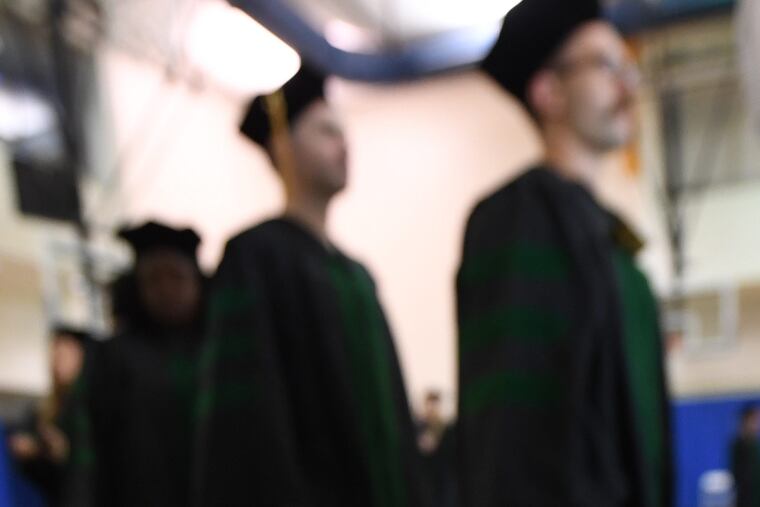Why are we the worst state for student loan debt?| Editorial
One factor that drives so much debt is the high cost of a college education. And, in Pennsylvania, elected leaders haven't done enough to help college-bound residents find a reasonably priced education. They have, instead, historically underfunded higher education.

College loan debt is so overwhelming that students are defaulting at a rate of 10 percent, a number that's expected to increase in the coming years. (For comparison, the default rate on prime mortgages made in 2007, during the mortgage crisis, was 4.8 percent, according to the Federal Reserve Bank of Chicago.)
Nowhere is the student debt burden heavier than in Pennsylvania, where the average graduate is shouldering roughly $36,000 in loans, reported staff writers Erin Arvedlund and Bob Fernandez in their first installment of an occasional series examining the student debt crisis.
Students are holding so much debt, they can barely participate in the economy. Even the ones lucky enough to get good jobs after graduation are putting off buying homes, cars, and other durable goods. That makes their financial problems a problem for the economy at large.
One factor that drives so much debt is the high cost of a college education. In Pennsylvania, elected leaders have shirked their responsibility to help provide reasonably-priced higher education. They have, instead, historically underfunded higher education.
The state system of 14 state colleges still hasn't gotten over severe cuts by former Gov. Tom Corbett and the Republican-controlled legislature. They cut state support by 7 percent for the 2011-12 fiscal year. Then, for the next three years, they recklessly froze state support, leaving students, their parents, and the colleges to make up the difference.
Tuition and fees in the state have shot up by 50 percent in just a decade. Now, average tuition and fees total $10,746 a year. Add room and board, and the cost is $21,682. It's impossible to know what the cost will be for the 2019 school year because the state budget won't be discussed for months.
Gov. Wolf was able to start small increases in funding for the 2015-16 fiscal year, but it hasn't been enough.
For its part, the system has been trying to cut costs by consolidating services among campuses (such as human resources), cutting energy usage, and leaving vacancies unfilled.
We need more creative programs like the state treasurer's $100 savings accounts for college-bound babies. Using private funding, Treasurer Joe Torsella is giving parents $100 to seed their children's college savings funds. If parents invest $25 a month in the fund, they'll have $10,000 toward tuition by the time their babies reach age 18. That's a good start, and a lesson in smart saving for parents anywhere who don't want their children burdened by debt.
Auditor General Eugene DePasquale acknowledges that funding is a huge issue but also rightly says he's concerned about colleges spending too much on attractions, such as dormitories or cafeterias. His office will soon audit the state system and should focus hard on ways to cut costs without cutting educational standards.
Wolf, who holds a Ph.D., knows full well the value of a college education. He should make funding higher education among his highest priorities in his second term. The usually stingy legislature should open its mind to the value of helping constituents escape crippling debt by making college more affordable.